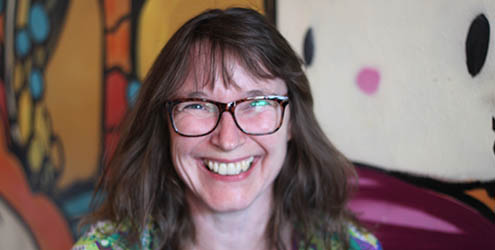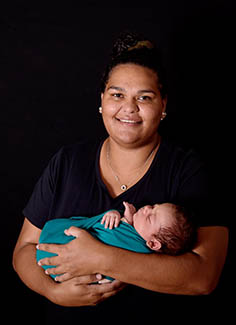Community
Copyright@ Australian Catholic University 1998-2025 | ABN 15 050 192 660 CRICOS registered provider: 00004G | PRV12008
Copyright@ Australian Catholic University 1998-2025 | ABN 15 050 192 660 CRICOS registered provider: 00004G | PRV12008

Picture this: In a hospital, a birth centre or at home, a woman in labour is groaning in distress. Their partner kneels beside them holding hands and gritting teeth. The midwife is there, too, promoting a sense of calm while ensuring that both mother and soon-to-be-born are safe.
Of course, there’s more to midwifery than supporting women through the intense, breathtaking and momentous occasion of childbirth. It is but one part of a profession that aims to provide care that meets the physical, psychological, emotional and social needs of women — before, during and after labour.
But would it be fair to say that most graduate midwives go into the job completely terrified at what might happen during those first few births, and how they’re going to handle it?
“I would say we probably experience that throughout our degree, not just as graduates,” says Stacey Judd, a third-year midwifery student at ACU in Melbourne.
“There’s always this crisis of confidence that comes before a placement, and it’s always going to be a massive learning curve. Even though you’ve been well supported and you’ve got all the knowledge you need to go into that profession, you are always going to say, ‘Am I the right person for this job?’
“But I think it’s about learning to be adaptable and flexible, and at the end of the day, just reminding yourself of the fact that you’re here for women, and that you’re supporting them.”
Helping student midwives through this confidence-building process is Bachelor of Midwifery course coordinator, Dr Jen Hocking. She joined the ACU teaching staff in 2018, having worked for many years as a midwife in the Victorian maternity care system.
“From the time I first started seeing ACU students at the hospital where I worked, I was blown away by them,” says Jen, whose research explores mother-and-baby matters.
“They were just a different kind student midwife — passionate, engaged and interested — and when I started working with graduates, I found the same thing. They were like a different breed. They’re absolutely focused on being midwives, and they’re very well-prepared to be amazing midwives.”

A more recent arrival to ACU’s Bachelor of Midwifery program is Professor Sara Bayes, an accomplished researcher who has been a midwife since 2003. When she joined ACU as its new Head of Midwifery in mid-2020, she set her sights on establishing a strong research culture within the discipline.
“The opportunity was there for us to create something really beautiful, which we have,” says Sara, whose research interest areas include the quality and effectiveness of antenatal education, and the psycho-emotional wellbeing of the midwifery workforce.
“We’ve now got a thriving research culture, with every academic leading a research theme, and we’ve extended that community to midwifery students to join our research group, whatever stage they’re at.”
Realising that ACU midwifery undergrads were “a fairly elite group” of students, Professor Bayes quickly moved to tap into their enthusiasm and resourcefulness. In late 2020, she approached undergrads involved with ACU’s Melbourne Midwifery Society with “a mad, ambitious idea” to start a student journal.
In response, the Society, which is known by its members as “MidSoc”, agreed to launch the journal. They named it Project Midwife.
“Once they committed to two issues a year, we just let them run with it and didn’t get involved at all, until we saw the first draft, which just brought tears to our eyes,” Sara says.

Professor Sara Bayes
The inaugural issue features messages from MidSoc’s founders Robyn Sinclair and Calida Fifer, who launched the Society in 2015 “out of a desire to build a midwifery community”.
It also features the ‘Birth Yarns’ section, which focuses on childbirth and midwifery in Aboriginal and Torres Strait Islander communities. This includes interviews with Cherisse Buzzacott, an ACU midwifery graduate and Arrernte woman who is a strong advocate for Birthing on Country, and Aboriginal artist Bobbi Lockyer, whose stunning photographs capture the raw beauty of Indigenous culture.
“Our readers have been really thrilled with the Birth Yarns section, and how it looks into Indigenous midwifery and everything that entails, because it’s such a big space we can expand into and it’s something that’s really important in terms of cultural competence,” says Stacey Judd, the Midwifery Society’s current president.
“The Bachelor of Midwifery at ACU has its own Indigenous stream, so connecting with our students and highlighting them as part of our Bachelor of Midwifery group is really important for us as well.”


Cherisse Buzzacott
Since its establishment in 2015, the Melbourne Midwifery Society has committed to raising funds and assembling 1,000 birthing kits each year for distribution through the Birthing Kit Foundation, a humanitarian organisation that provides clean birthing resources and education to women in remote regions of the developing world.
While in previous years MidSoc ran ticketed fundraising events with speakers like childbirth educator Rhea Dempsey, in 2020, the pandemic meant that wasn’t possible. The funds raised through subscriptions of Project Midwife have since stepped in to fill the breach.
“If we look at what midwives are all about, we’re all about promoting safe births for women and ensuring that the outcomes they experience send them on a way to a healthy life, not just for themselves, but their babies as well,” Stacey says. “It really felt like there was no better way to connect the journal to a global scheme than to have it support our birth kit fundraising.”
Midwifery course coordinator Jen Hocking says Project Midwife is another example of “how awesome the students are in this course”.
“It’s such a great illustration about the impact that students can have,” Dr Hocking says. “They’ve shown they’re able to challenge some of the stuff that’s out there for our profession as emerging leaders, but also just as people coming to the profession.”
With eight student volunteers on MidSoc’s executive committee, bringing Project Midwife to fruition is a team effort, and the second issue is already in production, with a focus on trauma and violence-informed care.
As for the Society itself, its president Stacey Judd says it will continue to be “a place of connection, support and socialisation”.
“We always look at how we, as students going through our degree, can provide a village to our fellow midwifery students,” she says.
“Our community is well-known for a strong sense of connection and support that it provides, and we’ll continue to foster a space to connect with the wider midwifery community and our fellow students, both within Australia and all over the world.”
Keen to study midwifery at ACU? Explore the options.
Copyright@ Australian Catholic University 1998-2025 | ABN 15 050 192 660 CRICOS registered provider: 00004G | PRV12008